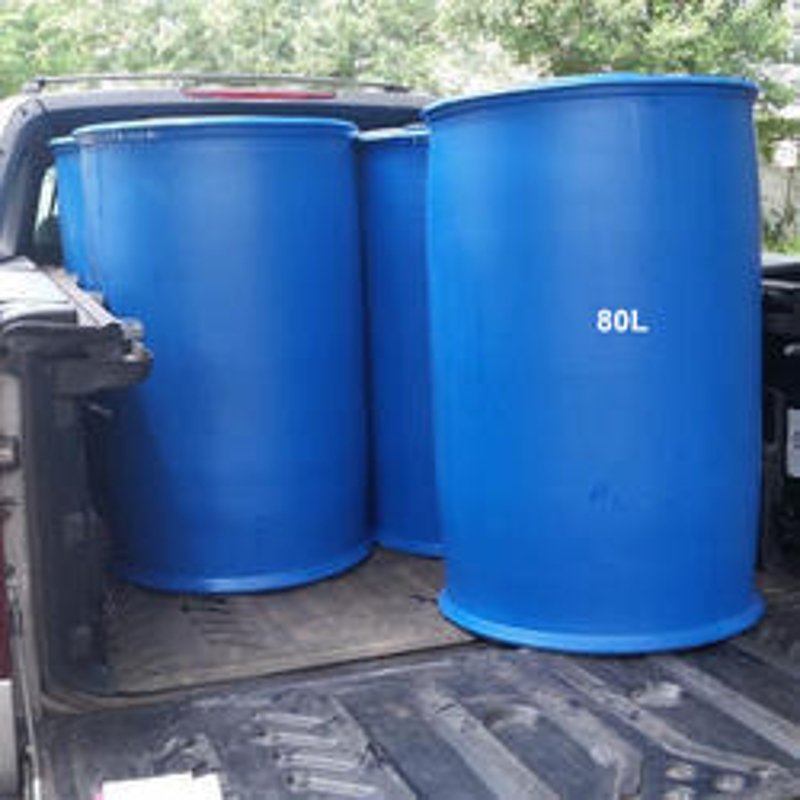-
Categories
-
Pharmaceutical Intermediates
-
Active Pharmaceutical Ingredients
-
Food Additives
- Industrial Coatings
- Agrochemicals
- Dyes and Pigments
- Surfactant
- Flavors and Fragrances
- Chemical Reagents
- Catalyst and Auxiliary
- Natural Products
- Inorganic Chemistry
-
Organic Chemistry
-
Biochemical Engineering
- Analytical Chemistry
-
Cosmetic Ingredient
- Water Treatment Chemical
-
Pharmaceutical Intermediates
Promotion
ECHEMI Mall
Wholesale
Weekly Price
Exhibition
News
-
Trade Service
[ Hot Focus on Chemical Machinery and Equipment Network ] In today's society, lithium-ion batteries have become an indispensable part of our lives.
Whether it is a mobile phone, a digital camera or a notebook computer, lithium batteries are indispensable
.
In the context of promoting carbon neutralization, accelerating the electrification of power systems has become an inevitable trend in the development of new energy vehicles, and lithium batteries are also the key technology of new energy vehicle power systems
.
Chemical machinery and equipment network hotspots focus on chemical machinery and equipmentWhether it is a mobile phone, a digital camera or a notebook computer, lithium batteries are indispensable
.
In the context of promoting carbon neutralization, accelerating the electrification of power systems has become an inevitable trend in the development of new energy vehicles, and lithium batteries are also the key technology of new energy vehicle power systems
.
Due to its advantages of high voltage, large capacity, and good cycle performance, lithium batteries stand out among many batteries and become quite an ideal and promising battery
.
This kind of battery can not only be repeatedly charged and discharged, but also can maintain high electric capacity continuously
.
At the same time, from the perspective of China's market, lithium batteries are very adaptable to China's development trends.
Charging piles and swap stations have been seen everywhere.
The bundling of infrastructure construction has also given lithium batteries an advantage that other industries do not have
.
.
This kind of battery can not only be repeatedly charged and discharged, but also can maintain high electric capacity continuously
.
At the same time, from the perspective of China's market, lithium batteries are very adaptable to China's development trends.
Charging piles and swap stations have been seen everywhere.
The bundling of infrastructure construction has also given lithium batteries an advantage that other industries do not have
.
Over the past ten years, the energy density of lithium batteries has been increased from 2 times to 3 times, and the cost has also been reduced by about 80%
.
In the first three quarters of 2021, domestic sales of new energy passenger vehicles will be 1.
821 million, a year-on-year increase of more than 200%
.
From the popularity of new energy vehicles in China to the explosive growth of demand, it can be seen that the people's recognition of lithium batteries, and the development of lithium batteries has a trend, which makes it impossible for lithium batteries to be quickly replaced by other energy sources
.
.
In the first three quarters of 2021, domestic sales of new energy passenger vehicles will be 1.
821 million, a year-on-year increase of more than 200%
.
From the popularity of new energy vehicles in China to the explosive growth of demand, it can be seen that the people's recognition of lithium batteries, and the development of lithium batteries has a trend, which makes it impossible for lithium batteries to be quickly replaced by other energy sources
.
But in fact, the current lithium battery is not perfect, and its potential safety hazards become increasingly prominent with the increase of energy density.
The bottleneck of further promotion and large-scale application of batteries, and improving the safety of batteries have also become a prerequisite for the healthy and sustainable development of the new energy industry
.
The bottleneck of further promotion and large-scale application of batteries, and improving the safety of batteries have also become a prerequisite for the healthy and sustainable development of the new energy industry
.
The Solid State Energy System Technology Center of the Qingdao Institute of Bioenergy and Processes of the Chinese Academy of Sciences has been deeply engaged in the construction of high specific energy and high safety lithium battery systems.
They set the revealing of the thermal runaway mechanism of the battery and the development of a high safety battery system as the key objects, and among them A breakthrough development has been achieved
.
They proved the existence of lithium metal hydride (LiH) in the lithium metal anode by means of titration-mass spectrometry, and quantitatively analyzed that the accumulation of LiH was negatively correlated with the cyclability of actual lithium metal batteries, revealing that lithium metal batteries key mechanism of failure
.
They set the revealing of the thermal runaway mechanism of the battery and the development of a high safety battery system as the key objects, and among them A breakthrough development has been achieved
.
They proved the existence of lithium metal hydride (LiH) in the lithium metal anode by means of titration-mass spectrometry, and quantitatively analyzed that the accumulation of LiH was negatively correlated with the cyclability of actual lithium metal batteries, revealing that lithium metal batteries key mechanism of failure
.
Similarly, on the basis of fully summarizing the thermal stability of battery materials and their thermal characteristics, the researchers proposed that the thermal compatibility between battery materials (electrode materials/electrolytes/additives, etc.
) is critical to battery safety.
The failure mechanism of the ternary high nickel battery (NCM523) was explored at the material-battery level by ex-situ coupling method, and the existence of H- ions was found on the negative side of the NCM ternary battery.
The electrolyte has poor thermal compatibility, which becomes the main trigger for inducing the chain exothermic reaction during the heating process of the battery
.
They also demonstrated that H2 generated on the negative electrode side of graphite can shuttle to the positive electrode side, thereby accelerating the violent exothermic behavior and becoming a key trigger for thermal runaway of the battery
.
) is critical to battery safety.
The failure mechanism of the ternary high nickel battery (NCM523) was explored at the material-battery level by ex-situ coupling method, and the existence of H- ions was found on the negative side of the NCM ternary battery.
The electrolyte has poor thermal compatibility, which becomes the main trigger for inducing the chain exothermic reaction during the heating process of the battery
.
They also demonstrated that H2 generated on the negative electrode side of graphite can shuttle to the positive electrode side, thereby accelerating the violent exothermic behavior and becoming a key trigger for thermal runaway of the battery
.
Not only that, the researchers from the Center for Solid State Energy Systems also systematically studied the thermal compatibility of the electrolyte/electrode in the lithium-sulfur (Li-S) soft package, the effect of polysulfide shuttle on the thermal safety of the battery, and the decomposition route of the electrolyte
.
Lithium-sulfur batteries with lithium metal anode and sulfur cathode have become one of the most attractive battery systems due to their ultra-high theoretical energy density (2500 Wh/kg), and have considerable commercial potential
.
The team revealed the exothermic chain reaction of Li-S batteries, and also found that in the Li-S system, the sublimation and melting of the sulfur cathode and the melting of the lithium metal in the anode lead to a crosstalk reaction between the anode and the anode at high temperature
.
The detailed analysis of the thermal runaway path of the Li-S system in this study will provide useful inspiration for the construction of the next generation of high specific energy and high safety battery systems
.
The detailed analysis of the thermal runaway path of the Li-S system in this study will provide useful inspiration for the construction of the next generation of high specific energy and high safety battery systems .
Lithium-sulfur batteries with lithium metal anode and sulfur cathode have become one of the most attractive battery systems due to their ultra-high theoretical energy density (2500 Wh/kg), and have considerable commercial potential
.
The team revealed the exothermic chain reaction of Li-S batteries, and also found that in the Li-S system, the sublimation and melting of the sulfur cathode and the melting of the lithium metal in the anode lead to a crosstalk reaction between the anode and the anode at high temperature
.
The detailed analysis of the thermal runaway path of the Li-S system in this study will provide useful inspiration for the construction of the next generation of high specific energy and high safety battery systems
.
.
Coincidentally, Professor Gerbrand Ceder of the University of California, Berkeley and Wang Yan's team of Samsung American Research Institute also paid attention to the safety of lithium-ion batteries.
The leakage and flammability of organic liquid electrolytes have always been a major safety hazard for lithium-ion batteries
.
They found that the use of inorganic solid electrolytes instead of organic liquid electrolytes can fundamentally solve this problem and improve the safety performance of batteries.
In this regard, the team successfully synthesized a new type of fast ion conductor material LiGa(SeO3)2, this material The bulk Li-ion conductivity at room temperature can reach 0.
11 mS/cm
.
The leakage and flammability of organic liquid electrolytes have always been a major safety hazard for lithium-ion batteries
.
They found that the use of inorganic solid electrolytes instead of organic liquid electrolytes can fundamentally solve this problem and improve the safety performance of batteries.
In this regard, the team successfully synthesized a new type of fast ion conductor material LiGa(SeO3)2, this material The bulk Li-ion conductivity at room temperature can reach 0.
11 mS/cm
.
The research team also found that the coordination environment of lithium ions in the co-apex skeleton structure is more distorted.
The distortion of the coordination environment leads to the increase of the energy of the stable site of lithium ions, which further leads to the decrease of the activation energy of lithium ion migration and improves the lithium ion migration activation energy.
ionic mobility
.
They also believe that the migration site of lithium ions in the co-apex structure is far away from the high-valent cations, and the repulsion of high-valent cations is felt weaker, which is also conducive to the rapid migration of lithium ions
.
The most important significance of these findings is to reveal the structural characteristics of oxide lithium ion conductors, which provides a clear direction for the development of new lithium ion conductor materials, and lowers the threshold for finding new solid state electrolytes, which is expected to accelerate solid state batteries.
development and application
.
This provides a clear direction for the development of new lithium-ion conductor materials, and lowers the threshold for finding new solid-state electrolytes, which is expected to accelerate the development and application of solid-state batteries The distortion of the coordination environment leads to the increase of the energy of the stable site of lithium ions, which further leads to the decrease of the activation energy of lithium ion migration and improves the lithium ion migration activation energy.
ionic mobility
.
They also believe that the migration site of lithium ions in the co-apex structure is far away from the high-valent cations, and the repulsion of high-valent cations is felt weaker, which is also conducive to the rapid migration of lithium ions
.
The most important significance of these findings is to reveal the structural characteristics of oxide lithium ion conductors, which provides a clear direction for the development of new lithium ion conductor materials, and lowers the threshold for finding new solid state electrolytes, which is expected to accelerate solid state batteries.
development and application
.
.
In recent days, Chinese government departments have continuously issued relevant policies such as the "14th Five-Year Plan for Scientific and Technological Innovation in the Energy Sector", "Opinions on Promoting the Green Development of the Belt and Road Initiative", and "The 14th Five-Year Plan for Ecological Protection Supervision".
Regulations, in order to actively respond to the healthy development of green environmental protection, and constantly introduce new ones
.
This kind of green environmental protection battery with high power endurance, no matter whether it is produced, used or scrapped, does not contain or produce any toxic and harmful heavy metal elements and substances such as lead, mercury, cadmium, etc.
, is undoubtedly in line with China's development strategy
.
It is believed that in the future, some defects of lithium batteries will also be filled by new methods discovered by scientists, bringing a kind of energy close to "perfect" for society as much as possible
.
Regulations, in order to actively respond to the healthy development of green environmental protection, and constantly introduce new ones
.
This kind of green environmental protection battery with high power endurance, no matter whether it is produced, used or scrapped, does not contain or produce any toxic and harmful heavy metal elements and substances such as lead, mercury, cadmium, etc.
, is undoubtedly in line with China's development strategy
.
It is believed that in the future, some defects of lithium batteries will also be filled by new methods discovered by scientists, bringing a kind of energy close to "perfect" for society as much as possible
.
(Data reference sources: Science and Technology Daily, CNKI)
Original title: No fire, no explosion! High specific energy, high safety lithium battery can be expected in the future







